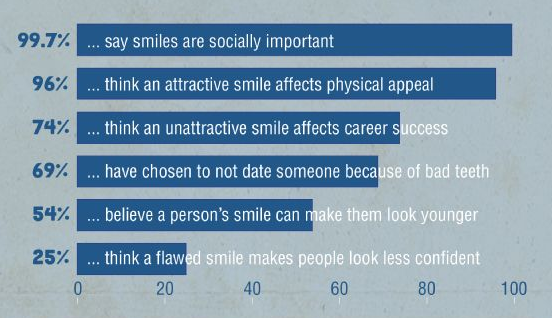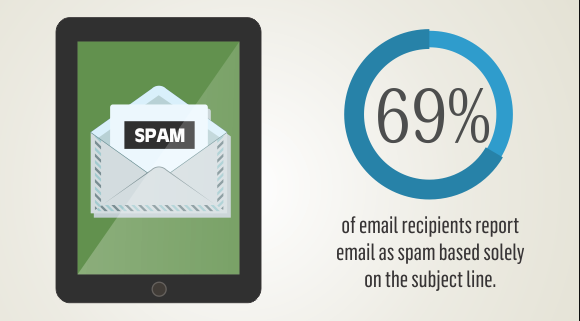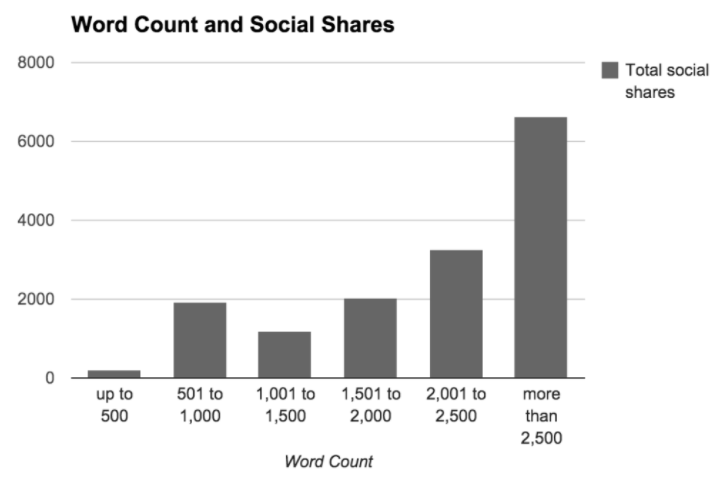Do you associate psychology with marketing?
The truth is, most marketers don’t have a background in psychology.
That doesn’t mean you can’t apply psychological concepts to your marketing strategy.
Let me preface with this – these hacks are in no way intended to mislead or trick your customers.
You do not want to do that.
Tricking the consumer can cause mistrust, which is bad for business.
You want your customers to trust you.
You can use psychology to strengthen and deepen the relationship between you and your customers.
Businesses can apply psychological concepts to their marketing strategy.
You don’t need a psychology degree to do this either.
Most of the concepts are quite simple on the surface.
It’s all about coming up with creative ways to apply the concept to your content strategy.
It may sound complicated, but it’s actually just great marketing.
You can really separate yourself from the competition if you implement some of these tactics to promote your content.
Let’s break this down to a simple concept.
You’re marketing to people.
Over time, psychologists have conducted research to help figure how people make decisions.
Choosing to buy something or not buy something is just a decision.
Learning how to understand why people respond to certain psychological factors is a genius way to promote your content.
Psychological hacks encompass:
- Emotion
- Instinct
- Logic
- Impulse
I’m not going to sit here and force psychology down your throat or try to teach you how the human brain works.
Instead, I’ll just outline the basics of some psychological concepts.
We’ll go through examples of each one, and I’ll show you how to apply it to your content strategy.
Using these psychological hacks can help you:
- Gain increased exposure
- Get higher conversion rates
- Generate more revenue
- Increase traffic to your website
These are the top 8 psychological hacks for your content strategy.
1. Apply Edward Thorndike’s “Halo Effect”
Edward Thorndike was a psychologist in the early 1900s.
The halo represents an overall impression of a person, or in this case your business and website.
It represents how your company is perceived by the public.
If a company is good at one thing, it’s automatically assumed that they are good at other things.
Here’s an example we can all relate to.
Apple.
Apple is a global leader recognized for their innovative technology selling smart phones and computers.
So, when Apple launches a product such as a watch, customers assume that it will also be a high quality product.
Let’s look at another example.
People believe that your smile can affect your career success.
Of course, that’s not necessarily true.
But it’s all about perception.
So how can you apply this to your content strategy?
Establish credibility and authority in your area of expertise.
Do your research.
When I talk about marketing tools that can grow your business, I use my own experiences for credibility.
You can do the same.
Let people know why you’re an expert in the industry.
Use other authority sources to back up your credibility.
If you’re writing a blog about health and relating it to products on your website.
But you’re not a health expert.
You can say, “According to the health experts at WebMD, 27 million people in the United States have type 2 diabetes.”
Refer to doctors by name.
Discuss and cite studies.
All of these will help create a positive perception or “halo” for your business.
Once you establish credibility, you can expand your product line, just like Apple.
2. Use the information gap theory
The information gap theory stimulates curiosity.
To apply this theory to your content strategy, you need to get people interested in what you’re doing.
Peak curiosity occurs when people are less familiar with a subject or topic.
The more they know, the less it interests them.
So here’s what you do…
Create a “gap” between what the consumers (or subscribers) know, and what you want them to know.
If your prospective customers want to know something, they’ll take certain actions to find out.
Sony used this theory in 2012.
They released a series of TV commercials with a woman in a creepy office.
The commercials included suspenseful music as if it was the preview for a movie.
There wasn’t any mention of Sony’s name, logo, or products.
But each commercial ended with this image.
It’s mysterious.
Are they releasing a new game system?
They don’t say.
But it gives their viewers a call-to-action.
It peaks interest and stimulates curiosity.
How can you apply this to your content strategy?
Do the same thing.
Don’t give your subscribers everything they need to know in just one blog post.
Give them a reason to come back.
Hint at upcoming topics you plan to cover.
If you’re emailing subscribers with links to your blog, use a catchy subject line.
How do you create a catchy subject line?
People are attracted to subjects that stimulate the most curiosity.
Apply the same theory to your blog titles.
An interesting title can get readers to click on your link.
Next, you want to focus on the first few sentences of your content.
If you can’t capture the reader’s attention with your opening lines, they may not continue reading the entire article.
Using the information gap theory can help you create a buzz around your business, website, and blog.
3. FOMO (fear of missing out)
Have you heard the term FOMO?
I’m sure you’ve seen this posted on social media comments before.
People write “FOMO” on photos or posts if they are busy and their friends are doing something fun.
Amazon used this psychological hack to promote their Amazon Prime service.
It normally costs $99 for a yearly membership, but they cut the cost for a limited time.
Amazon used this technique quite well.
They gave consumers a limited time to purchase a membership at a discounted rate.
Act now, or you’ll miss out.
If a customer was interested in Amazon Prime, it entices them to sign up for the fear of missing out on a great deal.
Apply the same theory to your content strategy.
Let’s say you have an ebook that you’re trying to promote on your website.
Give your subscribers a small window of time to download it for free.
You want to create a sense of urgency with your campaign.
Here’s an alternative…
Instead of offering something for a limited time, you can offer a limited quantity.
If consumers don’t act fast, they’ll miss out on their chance.
Your product is rare, limited, and is going to sell out fast.
4. Start practicing the theory of reciprocity
The psychological theory of reciprocity is quite simple.
Kind actions are rewarded, and unkind acts are punished.
You can easily apply this to your social media campaigns.
Social media is a great way to promote your content and connect with consumers.
So how can you use the psychological theory of reciprocity here?
Like posts from your followers.
Comment on your followers’ posts.
They will return the favor.
Getting more likes, comments, and shares on social media are some of the best ways to promote your content.
Engage with your customers, and they will reciprocate.
You can do the same for other blogs.
Comment on other blogs in your industry to stimulate communication with people.
Based on this theory, these people will get drawn to your blog and comment as well.
Getting more comments on your content will increase the word length on your page.
If your blogs are typically short, the added comments can help add length and increase the chances of being shared.
You can accomplish all of this by applying the theory of reciprocity to your content strategy.
5. Create controversy to spread your content
Controversy sells.
You just need to be careful how you approach this.
Don’t take some sort of drastic stance on a topic or side with political parties, race, or religion – that’s too messy.
Instead, discuss topics that can naturally create controversy with your audience.
Do you remember the controversy about this dress from a couple of years ago?
I won’t argue with you about the color of this dress.
This image stimulated so much drama and confusion through social media and news outlets for weeks.
This is the kind of controversy that you need to create.
Let your content go viral by coming up with unique topics like this.
Now, I’m not saying you can easily create as much buzz as this dress did.
But some buzz is better than no buzz at all.
Let your subscribers tell you how they feel if they are opposed to your views.
Customers can speak amongst each other as well if they have opposing ideas.
Controversy sells.
Just turn on your local news station.
You’ll see two things.
- Weather reports
- Controversial topics
The news covers controversy because it gets viewers to tune in.
You can apply the same concept to your content strategy.
6. Tell stories that can stimulate the brain
Storytelling is an art.
You can use this as a physiological strategy for your content because it impacts the brain.
The best stories will trigger a dopamine release from the reader.
Dopamine gets released when they have an emotional connection or response to what they’re reading.
Readers will automatically relate your story to something in their own lives because that’s how the brain naturally functions.
If you can master the art of storytelling, you can gain a massive following.
For those of you that aren’t familiar with this concept, you can learn the basic ways to increase your conversions by leveraging storytelling.
If you don’t know where to begin – start with your story.
You may think that your life is boring and you don’t have good stories to tell.
But you’d be surprised.
Good writers can find a way to connect with their audience.
I use this storytelling method with my articles as well.
This story got thousands of shares through social media.
It’s something people are interested in because they can connect with the subject.
OK – most people aren’t spending hundreds of thousands of dollars on clothing.
With that said, consumers want to know if they can turn a profit from buying clothes as well.
People can relate to shopping addictions.
You want your subscribers to relate to you.
It builds trust and establishes a rapport.
Rapport will make people feel like they know you, so they’ll want to support your company and your business.
Once you start writing engaging content, people will keep coming back to read more stories in the future.
7. BYAF (but you are free) method
The idea of BYAF is an interesting psychological concept
I’ll use an example to explain it.
Taylor & Francis Online conducted a study to showcase how this works.
An experimenter asked random people if they could spare some change so he could get on the bus.
When the experimenter used the term “but you are free to accept or refuse” in the inquiry, people were much more likely to give money.
Using this phrase had double the success rate as the control group.
It’s a great way to psychologically persuade your customers.
Your customer wants options.
Sure, they understand that they have the right to refuse your offers.
But psychologically speaking, it’s in your best interest to remind them.
I use this method for my blog as well.
Rather than just including a button for “Yes” with a small “X” in the corner, I give my subscribers the option.
Obviously, I want them to click yes, which is why I made it bigger and bolder.
Although I don’t come out and say the words “but you are free to choose” – it’s implied by the two options.
If you’re making a sales pitch, you don’t always have to end with a hard selling statement like, “So how many do you want to buy?”
Instead, you can try closing with, “If you’re not interested, I completely understand.”
Psychologically, it will lower the guard of the person you’re selling to.
Try to incorporate the words, “but you are free to choose” in your content where you’re trying to sell something.
8. The paradox of choice
Don’t overwhelm your customers.
Less is more.
If your content promotes all of your products at once, it’s too much.
Let’s look at this website as an example.
It’s simple, which doesn’t overwhelm the visitors.
You’ve only got four options to click.
- Home
- About
- Blog
- Gallery
Having 20 options, extra sidebars, and drop down menus are ineffective.
Instead, stick to a limited number of choices, like the example above.
Simplify your website.
Here’s another example that’s directly related to sales.
The Journal of Personality and Social Psychology conducted an experiment.
They wanted to compare customers purchasing decisions based on the choice paradox.
One group of customers was offered 24 flavors of jams.
The other group was offered six flavors of jams.
Customers were 40% more likely to buy jam when they were only offered six options.
Only 3% of people made a purchase when they had 24 choices.
The customers who were offered six jams also reported a higher buying satisfaction.
Apply the same concept to your content strategy.
If you’re going to advertise some products or services, keep it limited.
You maybe have 100 products for sale, but if you want to promote them in a blog or social media post – narrow down the choices.
Select the products or services that generate the highest profits.
Conclusion
Let’s recap.
Psychology and marketing may appear to be unrelated at first glance.
Based on what we’ve just covered, this clearly isn’t true.
You don’t need to have a degree in psychology to be a marketing expert.
However, you do need to understand your customers if you want them to fall in love with your company.
Learning how to use simple hacks to slightly adjust your content strategy can make a huge difference.
It’s not difficult – it just takes some practice.
Learn how to tell stories.
As we discussed earlier, storytelling can release dopamine from the readers’ brainers.
Stories stimulate an emotional connection between you and your audience.
You can use this connection to your advantage by increasing conversions.
Apply other psychological tactics like the information gap theory and halo effect.
First, establish a positive perception of your company using the halo effect concept.
Next, you can use the information gap theory to create mystery and promote curiosity with your customer base.
Once you’re perceived as an authoritative source in your industry, it’s easy to capture the attention of your subscribers through promotional teases.
Give your customers choices with the concept of “but you are free.”
But limit their options with the paradox of choice theory.
You can also create a buzz surrounding your content by using controversy as a psychological driving force.
Just remember to stay away from taboo topics like religion, race, and politics.
Psychology can help you improve the overall customer experience and increase customer retention.
Which psychological hack will you implement first to your content marketing strategy?


















Comments (4)